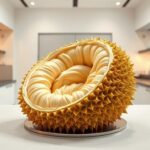AMT: Trusted Medical Device Contract Manufacturing.
For nearly 85 percent of medical device startups, finding a trustworthy manufacturing partner is critical. This significantly affects on-time market entry.
Based in Singapore, AMT Pte Ltd is an expert in contract manufacturing. Backed by years of contract manufacturing of medical devices by AMT experience, AMT supplies comprehensive medical device manufacturing services. AMT manages everything—from materials sourcing and rapid prototyping to precision assembly and market launch.
AMT’s ISO 9001 and ISO 13485 certifications support compliance for U.S. and EU exports. This focus on compliance minimizes risks for OEMs and enables faster regulatory submissions.
Medical device OEMs, startups, and product teams consider AMT indispensable. AMT helps streamline production, cut costs, and shorten launch timelines. By partnering with AMT, companies can flex manufacturing capacity as needed while keeping design control and IP protection secure.
Major Takeaways
- AMT integrates OEM expertise with complete production services.
- Strong regulatory certifications: ISO 9001, ISO 13485, and alignment with 21 CFR Part 820.
- Coverage spans materials sourcing, prototyping, assembly, and global release.
- Partnering with AMT cuts CapEx and shortens development schedules.
- Ideal for OEMs, startups, and product teams seeking a reliable Singapore partner.

The medical device market landscape and rising demand for contract manufacturing
The global demand for medical technology is increasing quickly. Analysts see $595B+ by 2024 and $625+B by 2027, with ~6% annual growth through 2030.
Growth drives demand for scalable production, broader portfolios, and stringent quality from partners offering leading medical device manufacturing services.
Advances in cardiac, orthopedic, neuro, urology, and diabetes tech are fueling product surges. Because these categories require precision parts, electronics, and sterilizable items, many device makers are outsourcing.
They do this to use specific tooling, automated processes, and checking methods without heavy CapEx.
By outsourcing, companies can get their products out faster. With facilities, cleanrooms, and expertise, contract manufacturers compress design-to-launch timelines. Partnerships are vital for remote-control and connected health devices to scale effectively.
Singapore is a leading hub for medtech supply and logistics. It has talented engineers, aligns with global rules closely, and is near many Asian markets. This makes Singapore ideal for contract manufacturing of medical devices by companies like AMT, handling both small and large orders well.
As makers of medical devices focus more on their main skills, they look for the best contract manufacturing partners to lower risks and accelerate product launches. Singapore partnerships combine domain expertise, robust supply chains, and deep manufacturing to deliver complex products worldwide.
Why OEMs Choose Medical Device Contract Manufacturing
Original equipment manufacturers (OEMs) team with experts as production needs grow to keep focus on product design, regulatory strategy, and market entry, while experienced teams handle manufacturing—an effective approach for innovating under strict quality.
Focus on core competencies: R&D, marketing and regulatory strategy
Enabling engineering focus on R&D and regulatory planning improves outcomes. By outsourcing production, they can use more resources for testing, labeling strategy, and market outreach. Partnering with AMT supports design revisions while maintaining audit-ready traceability.
Capital expenditure avoidance and scalable production
High equipment/cleanroom costs challenge smaller firms; AMT partnership avoids that CapEx. AMT has the infrastructure ready, enabling quick prototypes or full production without buying expensive equipment.
Faster time-to-market and rapid prototyping advantages
In competitive fields, speed is key—telehealth devices and wearable pumps need rapid development. With AMT, rapid prototyping/testing/transfer shortens development and speeds approvals.
| OEM Need | What AMT Provides | OEM Benefit |
|---|---|---|
| Regulatory documentation | ISO-aligned quality systems and validation support | Cleaner audits and faster approvals |
| Prototyping & iteration | Rapid tooling, electronics integration, small batches | Faster design cycles and reduced time-to-market |
| Production scale-up | Automation with validated processes | Predictable lead times and lower unit costs |
| Cost control | Lean manufacturing and supply-chain management | Lower CapEx, improved margins |
| Specialized builds | Custom medical device manufacturing for single-use and electronic devices | Multidisciplinary expertise without headcount |
Partnering with AMT transforms development via expertise, equipment, and quality systems, enabling faster patient access—smart for growth-focused companies.
AMT and contract manufacturing of medical devices
From prototype to production, AMT provides single-point accountability, simplifying procurement, build, and shipment of complex devices.
Full assembly, tailored production, rapid prototyping, commercialization plans, and scalable ramp-ups are traceable end-to-end to cut risk and speed updates.
End-to-end service model & full assembly contracts
Engineering experts at AMT team with OEM designers to optimize designs for manufacturing, reducing rework, shortening production time, and boosting output; AMT manages sourcing, quality checks, and final assembly.
ISO 9001, ISO 13485 and 21 CFR Part 820 compliance
Operations rest on strong quality systems—ISO 9001 and ISO 13485 certified—and follow 21 CFR Part 820, helping ensure audit-ready devices for global markets.
Cleanrooms, tooling & automation at AMT
AMT plants feature cleanrooms, advanced tooling, and automation for scale; automation cuts errors and supports detailed part tracking to meet sterilization and cleanliness specs.
Core Capabilities: Injection Molding, PCBA, Precision Assembly
AMT uses advanced methods for medical device manufacturing, handling big and small orders with the same quality focus so hospital, clinic, and home-care products stay top-notch.
Injection molding produces strong, sterilizable parts ideal for medical use—housings, brackets, adapters—cutting cost while meeting strict cleanliness standards.
Printed circuit board assembly (PCBA) is critical for modern medical electronics; AMT builds heart monitors, wearables, and telehealth modules with controlled soldering and full traceability, enabling complex devices.
Precision assembly integrates mechanical parts and electronics into dependable products; expert technicians and strict inspections deliver high quality using approved materials and components.
Supply chain management keeps risks low and tracks every part—lot tracking and supplier checks ensure standards are met, enabling reliable, compliant devices.
Compliance, Quality Systems, and Risk Control
Strong quality systems are vital for safe medical products; AMT aligns to ISO 9001/13485 and 21 CFR Part 820 for Singapore and FDA expectations, with checkpoints in design, production, and release to lower risk and build trust.
FDA/ISO-Aligned QMS
Procedures, WI, training, audits, supplier oversight, and management reviews maintain compliance and reduce errors, aiding global submissions.
V&V, Design Transfer, and Documentation
Seamless design transfer with V&V confirms performance; documentation and DHFs streamline submissions and sustain lifecycle.
Supply-chain risk mitigation and component traceability
Teams select suppliers carefully and maintain AVL lists; serial/lot tracking prevents issues and protects product integrity even during critical component sourcing.
An experienced CM such as AMT ensures quality, compliance, and risk control end-to-end.
Case studies and success stories showcasing AMT expertise
AMT’s respiratory and telehealth programs demonstrate faster development, quality assurance, and regulatory success across regions.
Telehealth Ventilator & Remote Control Innovations
AMT, as Tier-2, enabled a telehealth ventilator with manual/remote control, reducing PPE use and enabling centralized monitoring—evidence of connected-care capability.
Respiratory Therapy: Assisted Cough Examples
AMT built systems for high-frequency chest vibrations, lung expansion, and cough assistance, maintaining airway patency with Positive Airway Pressure during breaks and using clean air-path control—requiring exact PCBA, precise molded fluid paths, and clean packaging—proving leadership in respiratory devices.
Single-use surgical components such as TURP electrodes
Sterile single-use TURP electrodes (steel/tungsten) require strict material control and traceability—AMT’s strength in disposables.
Cross-project learning helps move faster new products; insights from ventilators and respiratory builds aid wearable insulin pumps and surgical tools—making AMT a smart partner for scaling capabilities and speeding market entry.
Cost, timeline and commercial benefits of partnering with AMT
Working with AMT lowers upfront costs by avoiding cleanrooms and machinery, redirecting funds to design and market entry.
Purchasing scale and sourcing expertise secure quality parts at better costs, supporting competitive device pricing.
Quick prototyping and automated processes accelerate development—moving swiftly from prototype to full production and helping meet clinical and regulatory deadlines sooner.
For time-sensitive devices (e.g., insulin wearables), AMT’s test and supply capabilities accelerate progress.
AMT makes scaling straightforward, from small trials to large output, while maintaining quality and compliance for entry into multiple markets.
Internal teams focus on commercialization while AMT covers build and compliance for quicker entry.
Partnering with AMT means lower cost, faster development, and scalable production—accelerating revenue while reserving funds for expansion and customer outreach.
Technical Collaboration: Engineering, Prototyping & DFM
Early alignment brings AMT engineers into architecture, materials, and assembly planning—reducing risk and speeding progress.
Early Engineering Collaboration
AMT’s engineers bring lessons from ventilators and surgical tools to refine new designs, running checks to spot issues early and proposing cost-saving changes—a major edge in custom medical device development.
Fast Prototyping and Test Loops
Rapid prototyping at AMT tests ideas quickly; engineers build functional models, test, and iterate to reach final design faster and reduce late-stage redesign risk.
Design for manufacturability (DFM)
Part consolidation and assembly simplification improve yield, reduce cost, and smooth scale-up.
| Stage | AMT Activity | Benefit |
|---|---|---|
| Concept & early design | Architecture review, material selection, risk assessment | Lower risk with a clearer roadmap |
| Prototyping | 3D prints, functional prototypes, PCBA prototypes | Faster validation and regulatory data for submissions |
| Iteration | Performance tests, user trials, design refinements | Improved reliability and fewer late revisions |
| DFM implementation | Part consolidation, tooling recommendations, assembly simplification | Lower unit cost, higher yield |
| Ramp-up | Pilot runs, process validation, supplier integration | Smoother transition to volume with AMT partnership |
When seeking custom medical device manufacturing, clients gain with problem-solving engineers; emphasis on prototypes, testing, and DFM boosts readiness and strengthens confidence in a long-term AMT partnership.
How to Choose a Contract Manufacturer in Singapore
Selecting a good manufacturer is vital to product quality, regulatory success, and speed to market; Singapore offers global shipping, skilled talent, and strong compliance—compare carefully to preserve project value when choosing AMT or others.
Proven Certifications and History
Verify ISO 13485/9001 and 21 CFR 820; assess QMS docs (CAPA, DHR); seek evidence in respiratory, telehealth, and disposables.
Facilities & Logistics
Examine cleanrooms, tooling, injection molding, PCBA, and automation; visit sites to confirm space and environmental monitoring; Singapore’s location enables fast ASEAN and global shipping—ideal for global launches.
Communication, IP protection and partnership models
Seek secure PM, IP controls, supplier qualification, robust engineering support, continuity, and scalable models for new markets.
| Area | What to check | Reason |
|---|---|---|
| Regulatory Compliance | ISO 13485, ISO 9001, 21 CFR Part 820, FDA-aligned QMS | Market readiness with reduced regulatory risk |
| Technical | Cleanrooms, injection molding, PCBA, automation, tooling | Supports reproducible quality and scalable manufacturing |
| Domain Experience | Case studies in respiratory, telehealth, surgical disposables | Shortens onboarding and improves first-run yields |
| Logistics/Location | Ports proximity, regional channels, lead time | Cuts delays and inventory costs |
| Commercial & Legal | NDA terms, IP controls, contract flexibility, pricing models | Protects assets and allows scalable agreements |
| Communication & Culture | Tools, reporting, audits | Improves transparency and long-term collaboration |
Ask for customer feedback and conduct site visits to validate claims; pilot a small batch to assess process and supply fit—proper diligence builds confidence in a long-term partnership with AMT or another top medical device firm.
What’s Next: Trends Shaping Med Device CM
The future is moving toward personalization and faster, more digital workflows; Singapore and global manufacturers are adapting to patient-specific needs without major cost increases—requiring flexible tools, better data, and skilled teams.
3D printing and related tech enable small-batch, patient-specific parts—delivering faster care with less waste.
Smart systems and analytics improve manufacturing quality and safety, catching issues early and ensuring release readiness; AMT will apply smart tech to maintain high standards.
Focus areas include cardiac and orthopedic products, which demand very precise manufacturing—providers must grow services to keep pace.
Telehealth requires secure software and robust electronics; remote monitoring products show the need for close collaboration with manufacturing partners.
Manufacturers must mix automation with human skill for complex builds; those who choose wisely will excel in medtech by selecting the right projects.
Wrapping It Up
AMT’s medical device contract manufacturing helps research-focused OEMs expand, with ISO 9001/13485, 21 CFR 820, cleanrooms, and molding accelerating compliant entry.
Telehealth ventilators and TURP electrodes showcase AMT’s breadth and quality, reinforcing outsourcing as a strong path to regional growth.
AMT focuses on early engineering collaboration, fast prototyping, and efficient procurement; for Singapore and global OEMs exploring outsourcing, amt – contract manufacturing of medical devices could be the key, adding capacity and ensuring regulatory readiness while saving time and money.

